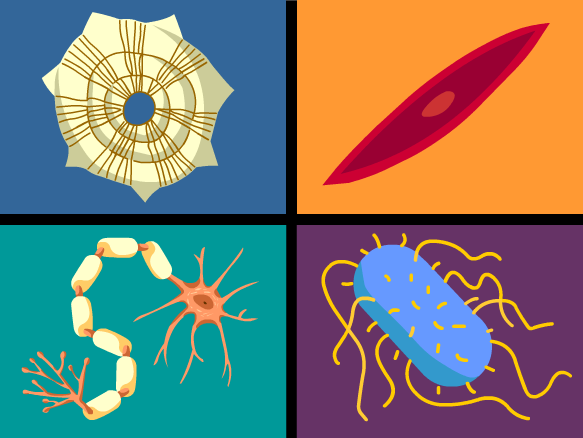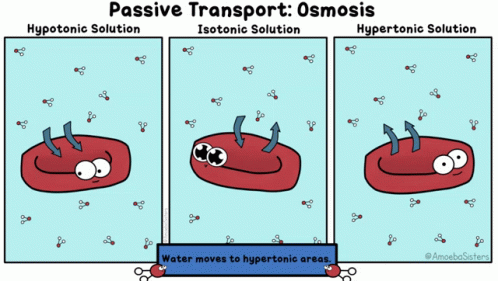UNIT 3: CELLS
(7 DAYS)
If you look at living matter with a microscope—even a simple light microscope—you will see that it consists of cells. Cells are the basic units of the structure and function of living things. They are the smallest units that can carry out the processes of life. All organisms are made up of one or more cells, and all cells have many of the same structures and carry out the same basic life processes. Knowing the structures of cells and the processes they carry out is necessary to understanding life itself. |
NC STANDARDS
Bio.1.1 Understand the relationship between the structures and functions of cells and their organelles.
Bio.1.1.1 Summarize the structure and function of organelles in eukaryotic cells (including the nucleus, plasma membrane, cell wall, mitochondria, vacuoles, chloroplasts, and ribosomes) and ways that these organelles interact with each other to perform the function of the cell.
Bio.1.1.2 Compare prokaryotic and eukaryotic cells in terms of their general structures (plasma membrane and genetic material) and degree of complexity.
Bio.1.2 Analyze the cell as a living system.
Bio.1.2.1 Explain how homeostasis is maintained in a cell and within an organism in various environments (including temperature and pH).
Bio 4.2.2 - Explain ways that organisms use released energy for maintaining homeostasis (active transport).
Bio.1.1 Understand the relationship between the structures and functions of cells and their organelles.
Bio.1.1.1 Summarize the structure and function of organelles in eukaryotic cells (including the nucleus, plasma membrane, cell wall, mitochondria, vacuoles, chloroplasts, and ribosomes) and ways that these organelles interact with each other to perform the function of the cell.
Bio.1.1.2 Compare prokaryotic and eukaryotic cells in terms of their general structures (plasma membrane and genetic material) and degree of complexity.
Bio.1.2 Analyze the cell as a living system.
Bio.1.2.1 Explain how homeostasis is maintained in a cell and within an organism in various environments (including temperature and pH).
Bio 4.2.2 - Explain ways that organisms use released energy for maintaining homeostasis (active transport).
ESSENTIAL QUESTIONS
1. How do prokaryotes and eukaryotes differ?
2. What are the main organelles (nucleus, plasma membrane, cell wall, mitochondria, vacuoles, chloroplasts, and ribosomes) and their functions?
3. How do cells maintain homeostasis?
4. How do organisms maintain homeostasis?
1. How do prokaryotes and eukaryotes differ?
2. What are the main organelles (nucleus, plasma membrane, cell wall, mitochondria, vacuoles, chloroplasts, and ribosomes) and their functions?
3. How do cells maintain homeostasis?
4. How do organisms maintain homeostasis?
|
DAY 1: PROKARYOTES VS EUKARYOTES
NOTES-Prokaryotes & Eukaryotes
Guided Notes-Prokaryotes & Eukaryotes Prokaryote Eukaryote Worksheet - Standard HONORS
Exploration - Pro & Eu DAY 2: ORGANELLES
|
VOCABULARY: Cell Prokaryote, Eukaryote, Organelle Cytoplasm Nucleus Nuclear membrane Chromosome Plasmid Plasma membrane Ribosome Cell wall Chloroplast Vacuole Mitochondria Lysosome Buffer Diffusion pH passive transport equilibrium selectively permeable osmosis concentration gradient hypertonic hypotonic Golgi body Endoplasmic reticulum isotonic facilitated diffusion active transport gene zygote stem cell gene expression gene regulation differentiation Homeostasis | ||||||||
|
DAY 3: CELL MEMBRANE & DIFFUSION
NOTES-Cell Membrane & Diffusion
Guided Notes-Cell Membrane & Diffusion Amoeba Sisters Diffusion CELLS VOCABULARY GAME VIRTUAL LAB OPTION
Diffusion Virtual Lab |
|
DAY 4: OSMOSIS
HONORS
Osmosis Practice-Honors |
DAY 5: ACTIVE TRANSPORT
DAY 6: UNIT REVIEW
DAY 7: UNIT TEST


